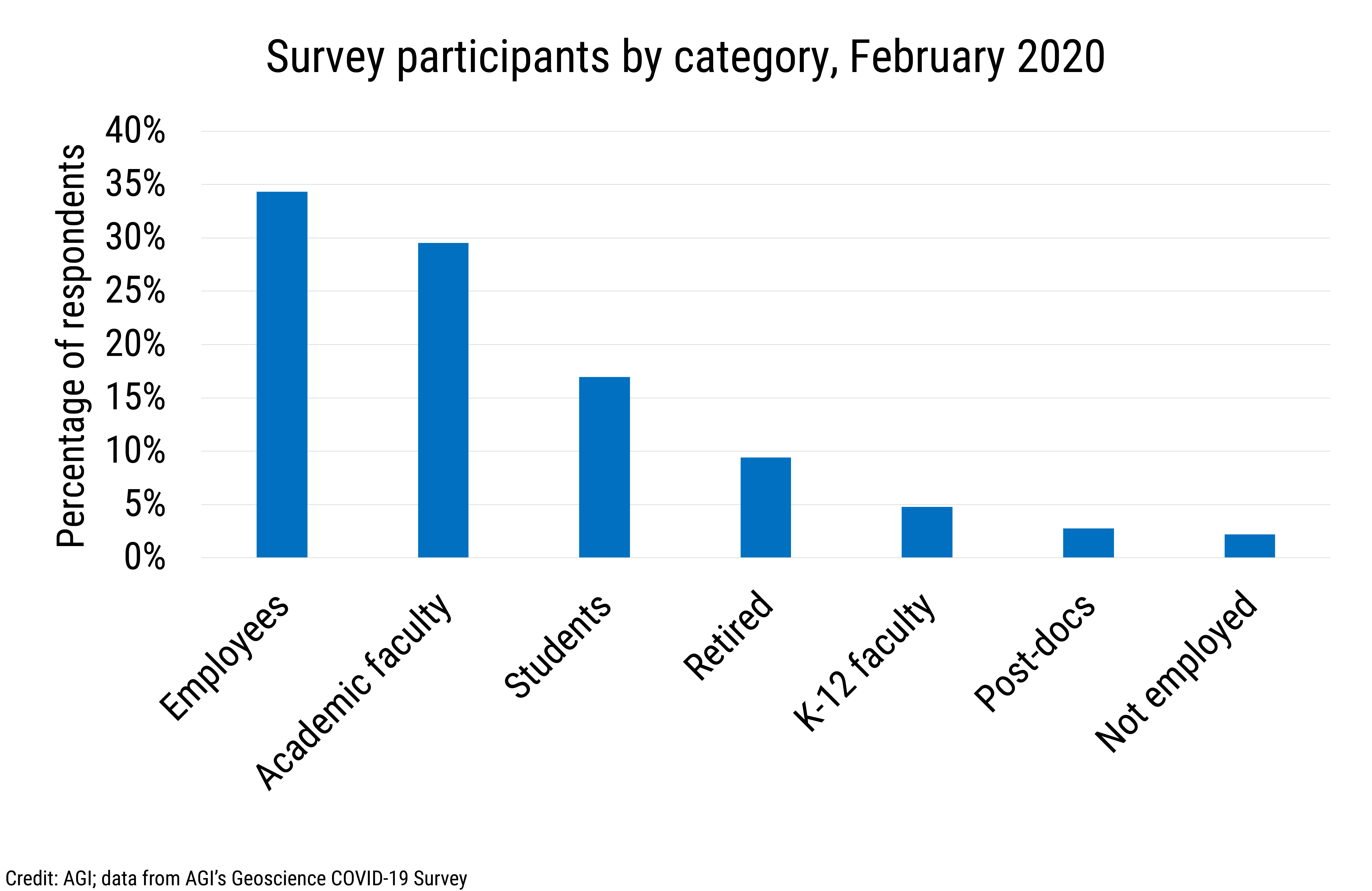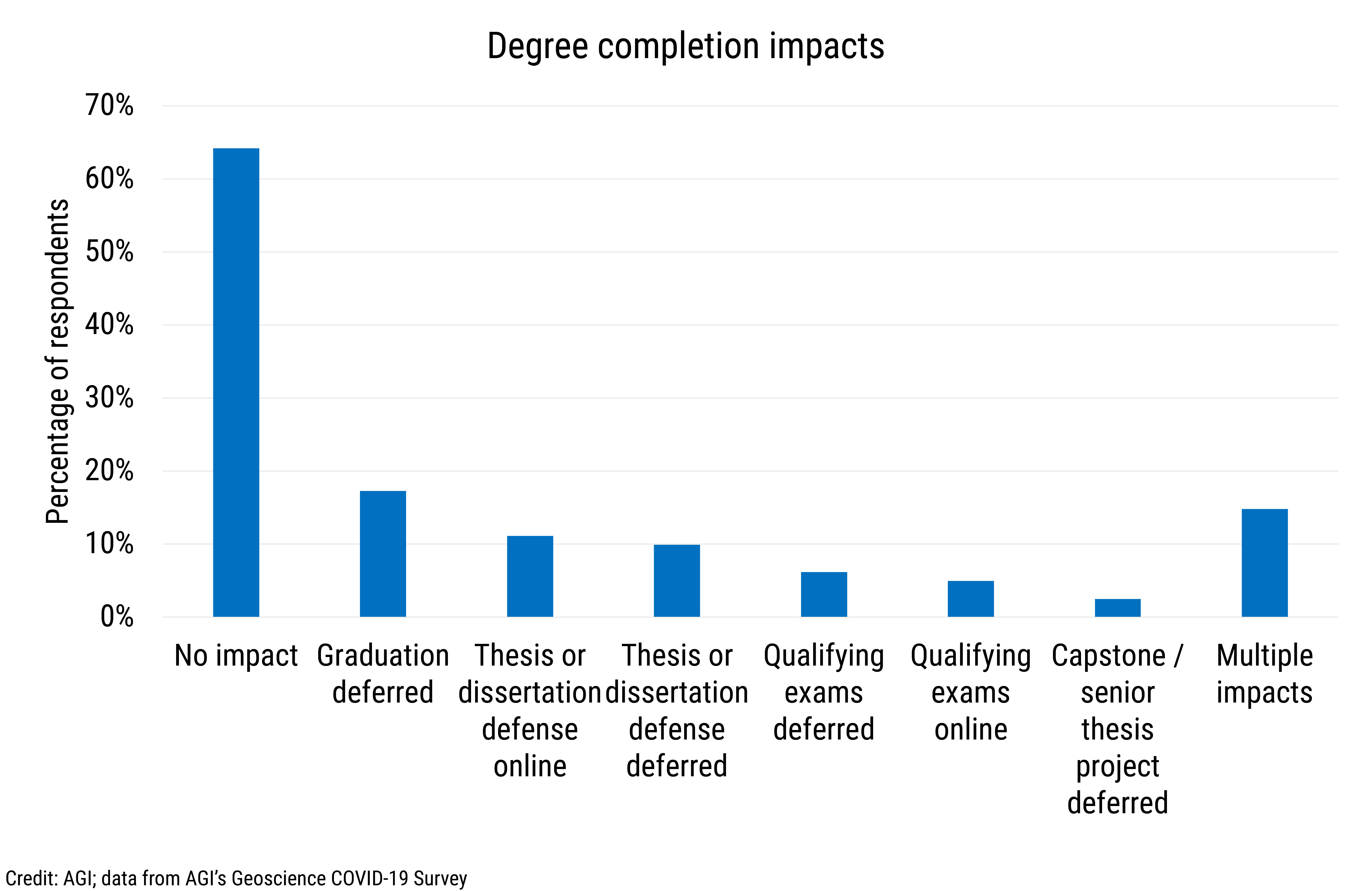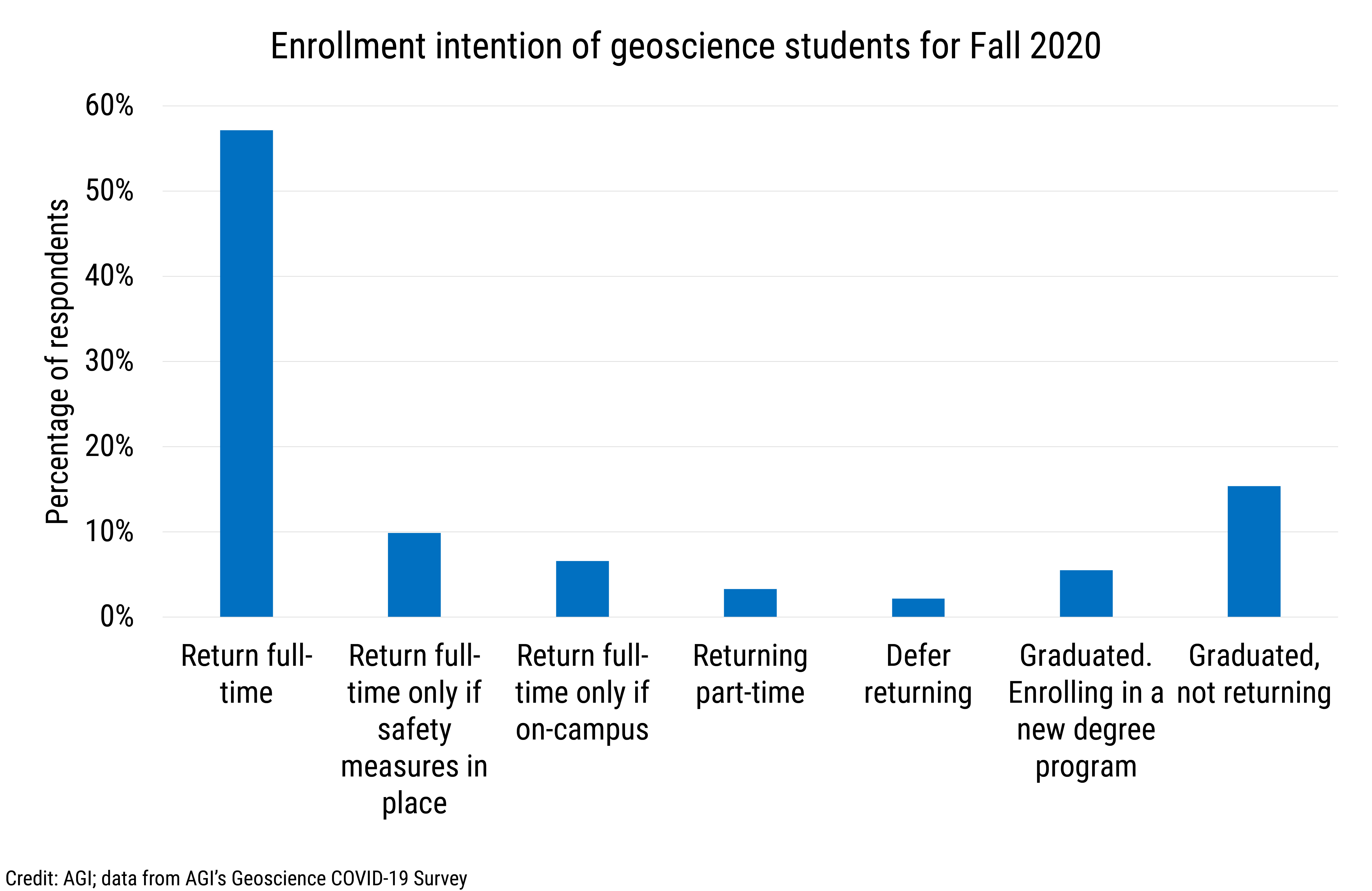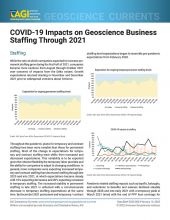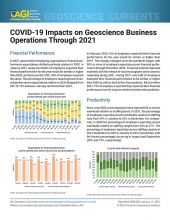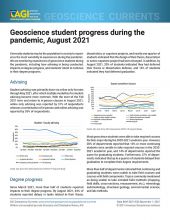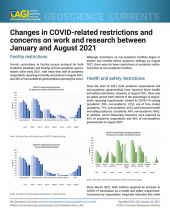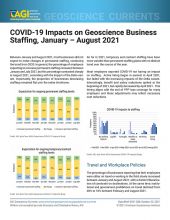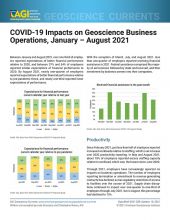In this data brief we examine changes in the workforce status and impacts to workplace activities between February and June 2020 based on initial responses from the Geoscience COVID-19 study. Most study participants were actively working during this period, with 71% working as geoscience employees, academic faculty, post-doctoral fellows, or as K-12 faculty. Students comprised 17% of survey participants, and retirees comprised 9% of survey participants.
Employed Geoscientists
Of those working full time in February 2020, 98% were still working full-time in June. Geoscientists working part-time in February 2020 also stayed employed, but 10% reported being shifted to contract work by June and 5% were furloughed. In February 2020, 92% of those working reported that their primary work location was at their employer’s office and 7% reported they primarily worked from home. Of those working in their employer’s office in February, 90% were working from home by mid-June and 9% were still working in their employer’s office.
Unemployed Geoscientists
By June 2020, 4% of survey participants reported they were not employed, up from 2% of participants in February 2020. This increase was driven by students who graduated during this period and had not yet found employment and a few individuals who were employed in February and became unemployed by mid-June. Of survey participants who were not employed in February 2020, one-quarter found work within the geosciences by June 2020.
Nearly all survey participants who were not employed in February 2020, were actively seeking employment within the geosciences, and just under half were also seeking employment in non-geoscience occupations. Reasons for seeking work outside of the geoscience included a lack of job opportunities within the geosciences, better opportunities in another field, and an inability to change location to take a geoscience job. Those who only sought work outside of the geosciences also mentioned not having adequate training or skills nor educational pre-requisites for available geoscience jobs.
Geoscience Students
Eighty-eight percent of those enrolled full-time in February reported the same enrollment status by mid-June. Those who changed their enrollment status reported that they had graduated, were unemployed, were not enrolled, or had transitioned to part-time enrollment.
In terms of degree completion impacts from COVID-19, 64% of students reported no impacts, while 17% reported that their graduation had been deferred. While 12% of students reported that their thesis, dissertation, or senior thesis / capstone project defense was deferred, 11% reported that they defended their thesis or dissertation online. Multiple impacts to degree completion were reported by 15% of students, including those impacts mentioned above as well as impacts to qualifying exams.
Fifty-seven percent of students reported that they intended to enroll as full-time students in the Fall. An additional 17% of students reported their intention to return as full-time students as long as certain conditions were in place – 10% intended to return full-time only if courses would be on-campus, and 7% reported they would return full-time only if safety measures were in place. 15% of students reported that they had graduated and were not returning while 5% reported that they graduated and were enrolling in a new degree program in the Fall.
Retired geoscientists
Between February and June 2020, there was a 25% increase in retirees who were active professionally or with volunteering. Although retirees became more active with research, project work and consulting activities as well as with professional society activities, the largest increase occurred with retirees doing non-geoscience volunteering activities.
We will continue to provide current snapshots on the impacts of COVID-19 on the geoscience enterprise throughout the year. For more information, and to participate in the study, please visit: www.americangeosciences.org/workforce/covid19
Funding for this project is provided by the National Science Foundation (Award #2029570). The results and interpretation of the survey are the views of the American Geosciences Institute and not those of the National Science Foundation.


